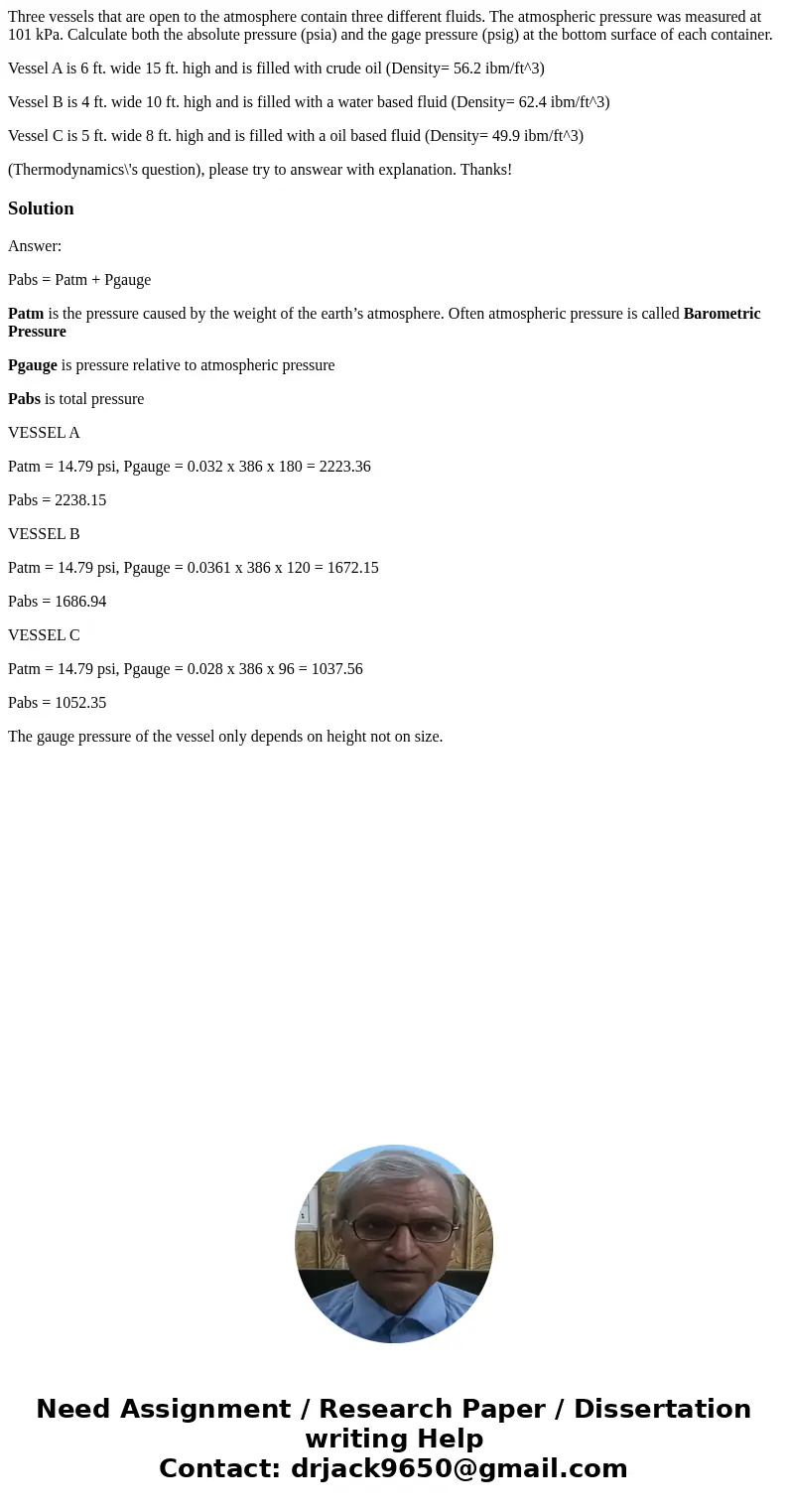Three vessels that are open to the atmosphere contain three
Three vessels that are open to the atmosphere contain three different fluids. The atmospheric pressure was measured at 101 kPa. Calculate both the absolute pressure (psia) and the gage pressure (psig) at the bottom surface of each container.
Vessel A is 6 ft. wide 15 ft. high and is filled with crude oil (Density= 56.2 ibm/ft^3)
Vessel B is 4 ft. wide 10 ft. high and is filled with a water based fluid (Density= 62.4 ibm/ft^3)
Vessel C is 5 ft. wide 8 ft. high and is filled with a oil based fluid (Density= 49.9 ibm/ft^3)
(Thermodynamics\'s question), please try to answear with explanation. Thanks!
Solution
Answer:
Pabs = Patm + Pgauge
Patm is the pressure caused by the weight of the earth’s atmosphere. Often atmospheric pressure is called Barometric Pressure
Pgauge is pressure relative to atmospheric pressure
Pabs is total pressure
VESSEL A
Patm = 14.79 psi, Pgauge = 0.032 x 386 x 180 = 2223.36
Pabs = 2238.15
VESSEL B
Patm = 14.79 psi, Pgauge = 0.0361 x 386 x 120 = 1672.15
Pabs = 1686.94
VESSEL C
Patm = 14.79 psi, Pgauge = 0.028 x 386 x 96 = 1037.56
Pabs = 1052.35
The gauge pressure of the vessel only depends on height not on size.

 Homework Sourse
Homework Sourse